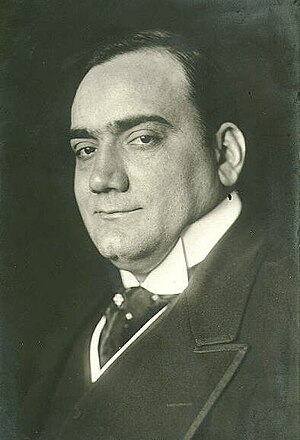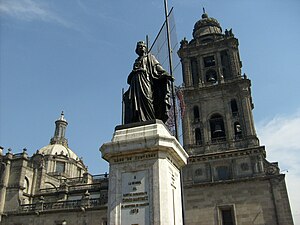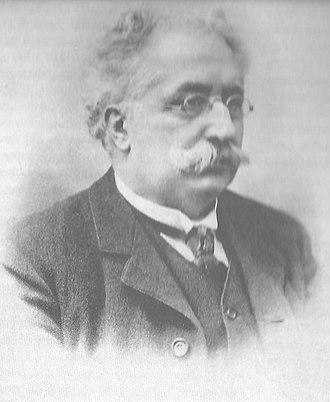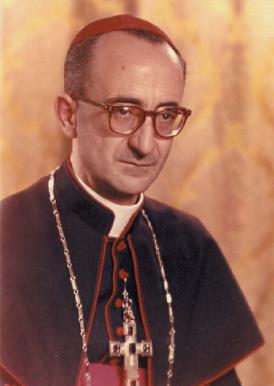Discover Your Roots
SIGN UPDiscover Your Roots
SIGN UPEnrico is a male name of Italian origin, meaning "Home Ruler." It is derived from the Germanic name Heinrich and is also used as a surname. In addition to Italian, Enrico is a given name in Ladino. Equivalents in other languages include Henry (English), Henri (French), Enrique (Spanish), Henrique (Portuguese), and Hendrik (Dutch). The name Enrico has historical significance and cultural relevance, with notable individuals such as Italian economist Enrico Barone, Italian opera singer Enrico Caruso, and Italian-American physicist Enrico Fermi bearing the name. Fictional characters like Enrico Marini from the Resident Evil video game series and Enrico Maxwell from the manga and anime series Hellsing also contribute to the name's recognition. Enrico is a name rich in heritage and symbolism, reflecting strength and leadership.

Enrico Caruso (1873–1921) was an acclaimed Italian operatic tenor, known for his exceptional performances at major opera houses worldwide. He is widely regarded as the first international recording star, having made around 250 commercially released recordings from 1902 to 1920. Caruso's early life in Naples was marked by financial struggles, and he worked as a street singer to support his family. His professional debut at the Teatro Nuovo in Naples in 1895 marked the beginning of a successful career that led him to La Scala and numerous prestigious international venues. Caruso's vocal talent, polished style, and high notes were honed under the guidance of prominent teachers and conductors. Notably, he created the roles of Federico in Francesco Cilea's L'arlesiana and Maurizio in Francesco Cilea's Adriana Lecouvreur. His legacy as an operatic icon endures through his enduring recordings and lasting impact on the world of music.

Enrico Martínez, also known as Henri Martín or Heinrich Martin, was a prominent cosmographer, publisher, and hydraulic engineer. His noteworthy contribution includes serving as the cosmographer to the King of Spain and working on draining the valley surrounding Mexico City in the early 17th century. Martínez was tasked with the challenging project of preventing the overflow of the Lakes of Zumpango and San Cristóbal into the basin, which posed a significant threat to the city. Despite facing challenges such as corrosion and financial constraints, Martínez diligently worked on the canal, known as Huehuetoca or Nochistongo, aimed at averting the danger of inundations. However, his efforts faced criticism and disputes, leading to the eventual arrest and imprisonment of Martínez. Despite subsequent attempts to rectify the situation, including the involvement of other engineers, the project ultimately experienced further setbacks, and the tunnel Martínez worked on was eventually converted into an open canal in 1789. Martínez also authored several published works, including "Lunario y Regimiento de Salud" and "Repertorio de tiempo e historia natural de Nueva Espana." His legacy continues to be associated with his significant contributions to hydraulic engineering and his written works on various subjects related to New Spain.

Enrico Zeno Bernardi (20 May 1841 – 21 February 1919) was an influential Italian engineer and a key figure in the early development of automobiles. Born in Verona, Bernardi's passion for engineering was evident from a young age, as he spent much of his time in blacksmiths' workshops honing his inventive skills. His early achievements included earning recognition for a mechanical model of a steam engine and locomotive at the Verona Agricultural Exhibition. After completing his education at the University of Padua, where he obtained a doctorate in mathematics, Bernardi went on to hold several prestigious positions in the field of physics and mechanics.Notably, in 1882, Bernardi created the Motrice Pia, a pioneering petrol combustion engine that was utilized to power various machinery, including his daughter's sewing machine and his son's tricycle. Subsequently, his engines and cars went into production, leaving a significant mark on the automotive industry. In recognition of his contributions, a museum dedicated to vintage cars, the Museo delle Macchine "Enrico Bernardi," was established in Padua, and an asteroid, 25216 Enricobernardi, was named in his honor. Enrico Zeno Bernardi's legacy continues to inspire and influence the world of engineering and automotive innovation.

Enrico Rosenbaum (June 18, 1944 – September 10, 1979) was an Italian-born American songwriter, arranger, producer, guitarist, and singer. He played a pivotal role in Minneapolis-Saint Paul bands such as The Escapades, The Underbeats, and Gypsy. In 1964-1965, The Escapades had the honor of being the opening act for Chuck Berry. Later, the band transitioned into The Underbeats and eventually rebranded as Gypsy in 1969. Rosenbaum's contributions to the music industry have left a lasting impact on the music scene. He was a multifaceted talent, showcasing his skills as a musician, songwriter, and producer. His work continues to be celebrated and remembered by music enthusiasts around the world. Enrico Rosenbaum's legacy lives on through his timeless musical creations.

Enrico Bartoletti (7 October 1916 – 5 March 1976) was an Italian Roman Catholic archbishop known for his personal holiness, political tact, and dedication to defending the lives of Jewish people during World War II. Born in Florence, Bartoletti studied for the priesthood and was ordained in 1939. Throughout his career, he held various leadership roles, including serving as the Archbishop of Lucca and Secretary General of the Italian Bishop's Conference. Bartoletti's efforts to address the injustices faced by the Jewish community during the Holocaust, as well as his contributions to catechetical and liturgical reform, are notable aspects of his legacy. Following his passing, the process for his beatification began, with the title Servant of God granted to him in 2007. The diocesan process for his cause of sanctification opened in 2007 and concluded in 2016. Bartoletti's commitment to social justice and his spiritual devotion continue to be remembered and honored.
All images displayed on this page are sourced from Wikipedia or Wikimedia Commons.We use these images under their respective Creative Commons or public domain licenses. Wherever applicable, author attributions and license information are provided. If you believe an image is used incorrectly or outside its license terms, please contact us so that we can review and correct the issue.